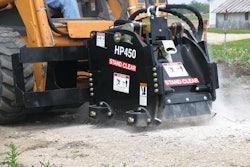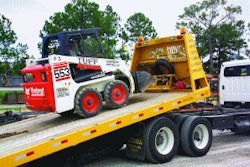After reading the title of this month’s dissertation, you are probably saying, “What is he talking about now?” What I’m talking about are funds leaving your wallet at a faster pace than they have in the past.
Do I have your attention now?
As you have probably heard, Congress intends to adjust the tax code by eliminating special interest group deductions to fund a reduction of the corporate tax rate down to 23%. In short, they want to make the tax rate reduction revenue neutral.
Now, you are all thinking this is a great idea because you are corporate owners in the form of an LLC or Sub-S Corp. Not so fast there, Mr. Contractor.
I forgot to mention that this rate reduction is only for C-Corps, with the rest of us winding up with higher taxable incomes at a 39% bracket. Not only did they forget to suggest a feature that would even out this corporate rate disparity, they added a few other changes that will make contractors cry:
- Decelerating depreciation
- Qualified extraction costs amortized instead of expensed
- No more percentage depletion
They did suggest one favorable change to make the Section 179 deduction $1 million with the limit beginning at $2 million. Buy up to $2 million in equipment and you have access to the $1 million of 179 allowance available. Buy $3 million, however, and you get zero 179 allowance. Purchases over $2 million offset the $1 million allowance dollar for dollar. This is designed for small businesses and I expect most of you could take advantage of this provision.
Back to the Bad Stuff
The Senate Finance Committee is proposing that tax depreciation be calculated using a pooling method similar to the method used in Canada. Most of your construction equipment and trucks would be in Pool 2 with an 18% depreciation deduction per year calculated by multiplying the year-end pool account balance by 18%.
Here is an example of how it works. Add $1,000 to your pool on January 1 and, if nothing else takes place during the year, you calculate 18% of the December 31 balance and use that $180 as your tax deduction. The new pool balance on January 1 of Year 2 is now $820. Assume another year without any additional activity in the pool account and you get to December 31 with an $820 balance, which is again multiplied by 18% or a $148 tax deduction, leaving a balance as of January 1 of Year 3 of $673… and so on.
Do you see what is happening here? You will never write this off because you keep taking 18% of the declining balance. The only way to benefit from the remaining pool balance is to sell the asset and offset the gain against the remaining pool balance. The neat thing is you do not pay tax gains from selling equipment unless the pool balance turns negative. In my example, the pool balance may or may not turn negative, depending on how much you sold it for.
If you take the example to the next step, you will add and subtract multiple units during the year and never pay tax on gains resulting from the sale of equipment unless the pool winds up with a negative balance. When you think about it, you get a like-kind exchange (LKE) deferral on the gain without using a formal LKE process. Pretty neat.
Here is the formula they follow:
Pool balance at year-end = Beginning of year pool balance + additions - sales - depreciation
Here’s the problem. You now need to track the tax balance in your pool account to project the tax depreciation deduction you will get. The deduction is calculated at the end of the year and there may be a need to add to the pool to get a deduction to offset taxable income. In short, you will need someone to keep track of this second set of books and keep you informed of the status of the pool.
Another problem: Assets depreciated within the last four years using Bonus Depreciation or MACRS will basically be fully depreciated. Any sales proceeds will reduce the pool to the extent that it turns negative, thus causing a 100% loss of a depreciation deduction. In its place is a payment on the gain of equipment sales.
Tough Tax Seasons Ahead
The point here is a lot of folks are in for volatile tax seasons going forward unless they keep track of their fixed asset pools. Never thought you would be working in my world, did you?
This Senate paper is still in draft form, giving you the ability to ask to have the C-Corp and flow-through Corp rates be set the same. And if you care to throw your two cents in regarding the decelerating depreciation proposal, be my guest. You may want to check out the Extraction and Depletion changes, as well, if they fit into your type of business.



















